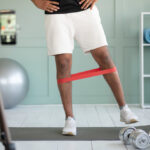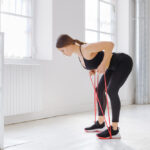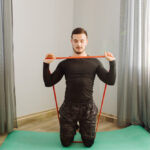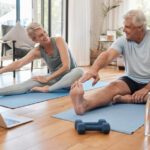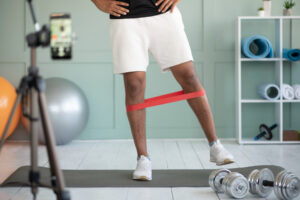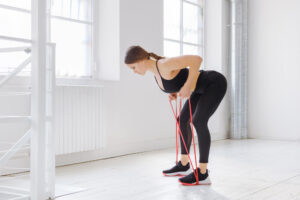This guide is specifically designed to help you enhance your bicep muscles through the art of calisthenics. Whether you’re new to bodyweight training or looking to spice up your routine, focusing on your biceps can not only add aesthetic appeal but also increase your overall upper body strength. Calisthenics exercises are versatile, can be performed almost anywhere, and require minimal equipment. In this article, we’ll explore effective techniques and exercises tailored to maximize your bicep growth using just your body weight.
Essential calisthenics exercises for biceps
To effectively target the biceps, incorporating the right exercises into your routine is crucial. Here are some essential calisthenics exercises designed to stimulate bicep growth and strength:
- Pull-ups: Known for their upper body benefits, pull-ups also greatly impact the biceps. Grip the bar with your palms facing away from you, pull your chin over the bar, and lower yourself slowly to maximize engagement.
- Chin-ups: Similar to pull-ups but with your palms facing towards you, chin-ups place more emphasis on the biceps. They are excellent for building bicep volume and can be easier to perform than pull-ups for beginners.
- Bodyweight bicep curls: Yes, you can do bicep curls with your body weight! Find a stable bar at waist height, lie underneath it, and pull yourself up as if performing a curl. Focus on using your biceps to pull, keeping your body straight and core tight.
- Commando pull-ups: Adding a twist to the traditional pull-up, commando pull-ups involve pulling up with one side of your body closer to the bar, alternating sides. This not only works your biceps but also adds an element of core engagement.
What to do if you can’t do pull-ups?
Pull-ups are a cornerstone exercise in calisthenics for developing upper body strength, particularly in the biceps and back. However, they can be quite challenging for beginners or those who haven’t yet developed sufficient upper body strength. If you find yourself struggling to perform a full pull-up, don’t be discouraged. There are several effective strategies and alternative exercises you can utilize to build your strength gradually and eventually master the pull-up.
- Negative pull-ups: Start by focusing on the downward (eccentric) phase of the pull-up. Use a box or a bench to jump and get your chin over the bar, then slowly lower yourself down as slowly as possible. This helps build strength in the same muscles used for pull-ups.
- Assisted pull-ups: If you have access to resistance bands, use them for assistance. Attach a band to the pull-up bar and place your foot or knee in the band. This will help lift some of your body weight as you perform the pull-up. As you get stronger, you can use lighter bands until you no longer need assistance.
- Lat pull-downs: If you have access to a gym, lat pull-down machines can help you build similar muscles as pull-ups. Focus on a full range of motion and proper form to maximize effectiveness.
- Inverted rows: Also known as Australian pull-ups, inverted rows are performed by lying underneath a low bar. Pull your chest up to the bar while keeping your body in a straight line. This exercise helps build back and bicep strength but is less intense than pull-ups.
- Scapular pulls: Often, the difficulty with pull-ups starts with insufficient scapular (shoulder blade) strength. Stand under a pull-up bar, grab it with both hands and hang with your arms straight. Try to pull your shoulder blades down and back without bending your elbows. This engages the muscles around your scapula and improves shoulder stability.
- Gradual progression: Consistency is key. Incorporate these exercises into your routine 2-3 times a week, gradually increasing the intensity and complexity of the exercises as your strength improves. It’s easy to default to the no-pain-no-gain adage while working toward muscle growth. Don’t forget – some pain is a warning from your body.
Final thoughts
Embarking on a journey to improve your biceps through calisthenics is not just about enhancing physical appearance—it’s about building functional strength and confidence that permeates every aspect of your life. Remember, whether you’re just starting out or refining your technique, the key to success lies in consistency and patience. If you need assistance to speed up your results, then don’t hesitate to contact one of our personal trainers.


